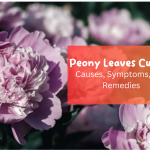Golden Pothos or Golden Syngonium, also known as Syngonium aurea, is a typical houseplant loved for its lovely foliage and low maintenance requirements. This adaptable plant brings a touch of elegance to any interior setting with its heart-shaped leaves splashed in green and gold. We will delve into the world of Syngonium aurea in this detailed guide, covering its history, ideal growth environments, methods of propagation, vital maintenance advice, and additional advantages of having this lovely plant in your house.
Origins and Characteristics of Syngonium Aurea
The Araceae family includes Syngonium aurea, indigenous to Central and South American rainforests. It is an evergreen vine that, depending on its support system, can either climb or trail. This plant is easily recognized by its unusual variegated foliage, which has heart-shaped leaves with golden or yellow striations that become more pronounced as the plant ages. Syngonium aurea is a popular selection for collectors and plant enthusiasts due to its eye-catching leaves.

Ideal Growing Conditions
- Lighting:
Golden Pothos favors brilliant direct light. But because it can work in low-light situations, it’s an excellent option for places with little natural light. It should not be exposed to direct sunlight because it will burn the foliage.
- Temperature:
Syngonium aurea does best in environments between 60°F (15°C) to 85°F (29°C). It’s crucial to shield the plant from chilly drafts and keep it away from vents for heating or cooling.
- Humidity:
This plant enjoys moderate to high levels of moisture. In dry locations, mist the leaves frequently or use a humidifier to provide the proper condition. Higher humidity levels encourage healthy growth and keep the leaves from drying out.
- Soil:
Use potting soil that drains well and holds moisture without becoming soggy. For Golden Pothos, a blend of peat moss, perlite, and sand works well. Ensure the pot has drainage holes to prevent water from building up at the roots.
- Watering:
- Let the top inch of soil dry out between waterings.
- Ensure the soil is never damp because excessive moisture can result in root rot.
- Adjust the watering frequency depending on the climate and the potting mix’s ability to retain moisture.
Propagation
- Stem Cuttings: Stem cuttings are a simple way to multiply Syngonium aurea. Make a clean cut just below a node on a stem that is in good health. Take off the bottom leaves, then submerge the cutting in water or damp soil to encourage root growth. Transfer the cutting to a container with well-draining soil once the roots have taken hold.
- Division: The plant develops numerous rhizomes as it ages. Plant these rhizomes in separate pots after carefully dividing them. Rapid growth and the development of new plants are made possible by this technique. Please make sure that each division has enough roots to sustain its growth.

Essential Care Tips
- Fertilization: To encourage healthy growth, fertilize Syngonium aurea with a balanced, water-soluble fertilizer once a month during the growing season (spring and summer). To prevent overfertilization, which can result in leaf burn, dilute the fertilizer by the manufacturer’s instructions.
- Pruning: Regularly prune back leggy growth and remove any yellow or damaged leaves to preserve a compact and clean appearance. Additionally, pruning promotes bushier growth and keeps the plant from becoming overly sparse.
- Support: Provide a trellis, moss pole, or stakes for climbing varieties, as they naturally tend to vine and climb. With this support’s aid, the plant can stand erect and display its cascading foliage.
- Pest management: Golden Pothos has a low level of pest susceptibility. However, watch out for common houseplant pests like mealybugs and spider mites. Use quick-acting organic or chemical pest management techniques to eradicate infestations, carefully following the directions to avoid causing plant harm.
- Toxicity: It’s crucial to remember that ingesting Syngonium aurea can harm humans and animals. Keep it away from children and animals; if you accidentally consume some, get help immediately.
Additional Benefits of Syngonium Aurea
In addition to its aesthetic appeal, adding Syngonium aurea to your indoor area has other advantages. This plant is well renowned for its ability to filter the air by removing pollutants like formaldehyde and benzene, which enhances the air quality within buildings. It also gives any space a tranquil and relaxing atmosphere, making it an excellent option for offices, bedrooms, or living rooms.
Typical Issues, Symptoms, and Treatments for Syngonium Aurea
Though it requires little maintenance, Syngonium aurea may have a few problems that could harm its health and attractiveness. To preserve the health of your Golden Pothos, be aware of potential issues early on and take action.
Leaf Yellowing or Browning
Symptoms: The signs of overwatering, underwatering, or exposure to direct sunshine include browning or yellowing leaves.
Solution:
- Change your watering practices: If overwatering, wait longer between waterings. If underwatering is the problem, water more frequently.
- Check the lighting: To avoid burning the leaves with direct sunlight, move the plant to a location that receives more diffused light.
Leaf Curling
Symptoms: Curling leaves could be a symptom of low humidity or dry weather.
Solution:
- To raise humidity levels, mist the leaves frequently or set a water tray close to the plant.
- Watering should be adjusted so the soil is continually moist but not drenched to give the plant enough moisture.
Pests
Signs: Spider mites, mealybugs, or aphids on the plant, visible webbing, or distorted leaves.
Solution:
- Determine the pest: Carefully examine the plant to determine which problems are specifically impacting it.
- Manual removal: To remove bugs, gently wipe the leaves with a soft cloth bathed in mild soapy water. For more tenacious vermin, use a cotton swab dipped in alcohol.
- Chemical or organic pest control: Use an appropriate organic or chemical insecticide on the plant by the manufacturer’s instructions to eliminate pests effectively.
Leggy Growth
Sign: Lack of light is indicated by sparse foliage and extended stems.
Solution:
- Change the plant’s exposure to light by moving it to a brighter spot with indirect sunlight to encourage more rounded development.
- Pruning and pinching: To promote bushier, more compact growth, trim back lanky stems and pinch off fresh growth tips.
Root Rot
Sign: Root rot brought on by excessive watering or poorly draining soil is indicated by wilting, yellowing leaves, and a foul smell coming from the soil.
Solution:
- Change your watering practices by letting the soil dry up before watering it again to avoid waterlogging.
- Improve drainage: Repot the plant in a soil mixture that drains well, and check that the pot has drainage holes so that extra water may flow.
Your Syngonium aurea may be kept healthy and beautiful while thriving indoors by swiftly addressing these typical issues and putting suitable remedies in place.

Conclusion:
Syngonium aurea, or Golden Pothos, is a striking and versatile houseplant that adds beauty, elegance, and fresh air to any indoor environment. You can appreciate Syngonium aurea’s beauty and benefit from its air-purifying properties by providing the best growing conditions, necessary maintenance, and appropriate propagation techniques. Create a calm and lively ambiance in your home by including this hardy plant, improving your decor and well-being. Read article about Gardenia Vs Jasmine and Elephant Ear Stems Bending in Avi Hoffman Garden.
FAQ
A1: Syngonium Aurea, also known as Golden Pothos or Golden Syngonium, is a popular houseplant with heart-shaped leaves splashed in shades of green and gold.
A2: Provide bright, indirect light, moderate humidity, well-draining soil, and water when the top inch of soil is dry. Prune and fertilize regularly for optimal growth.
A3: Syngonium Aurea can tolerate low light, making it suitable for areas with less natural sunlight. However, it thrives in bright, indirect light.
A4: Water the plant when the top inch of the soil feels dry. Avoid overwatering to prevent root rot, but ensure the soil remains consistently moist.
A5: Syngonium Aurea is a moderately fast-growing plant, especially with suitable growing conditions and regular care.
A6: Syngonium Aurea is primarily an indoor plant. It can be placed outdoors in shaded areas but should be protected from direct sunlight and extreme weather conditions.







